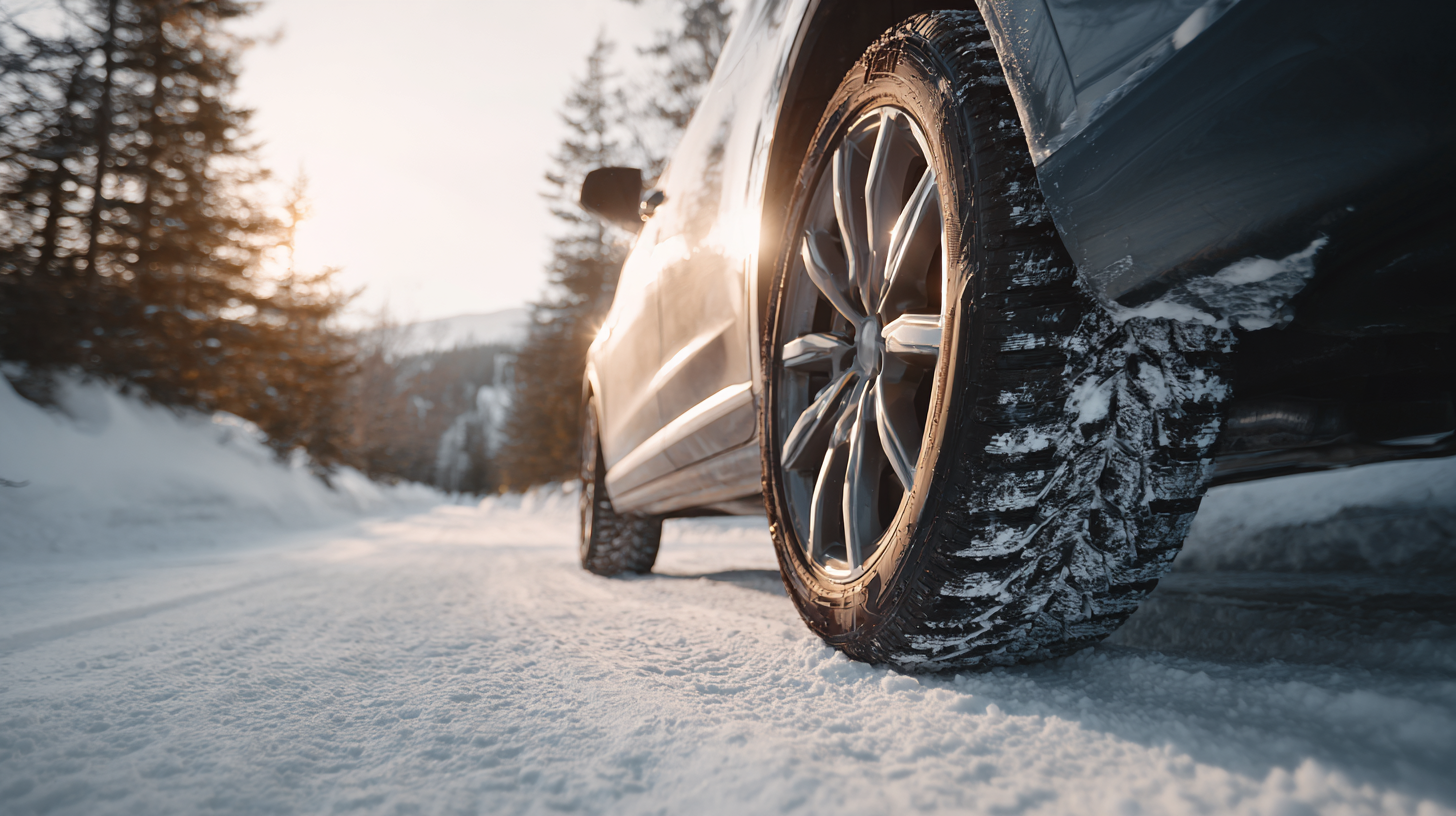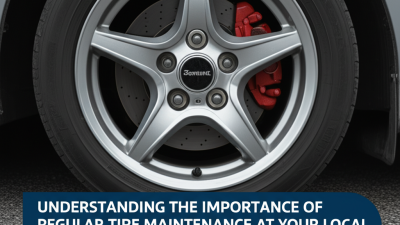14 Toro Road Toronto, Ontario
Ultimate Guide to Choosing Premium Winter Tires for Unmatched Safety and Performance
When it comes to ensuring unmatched safety and performance during the harsh winter months, choosing the right premium winter tires is crucial. According to renowned tire expert Mark Sullivan, "Investing in high-quality winter tires can make all the difference in maintaining control and traction on icy roads." As winter approaches, many drivers find themselves pondering the best options to navigate through snow and sleet safely. Premium winter tires are specifically designed to combat the challenges posed by winter weather, providing superior grip, enhanced durability, and optimal handling.
In this ultimate guide, we will delve into the essential factors to consider when selecting premium winter tires, from tread patterns to rubber compounds. With insights from industry experts like Sullivan, we aim to empower drivers with the knowledge they need to make informed decisions. Emphasizing the importance of not just functionality but also performance, we will explore how investing in premium winter tires can lead to a safer and more enjoyable driving experience throughout the coldest months of the year. Discover the advantages of premium winter tires and equip yourself with the expertise to tackle winter driving challenges head-on.

Understanding the Importance of Winter Tires for Safe Driving in Cold Climates
When it comes to safe driving in cold climates, understanding the critical role winter tires play is essential. According to the Tire and Rubber Association, winter tires can significantly outperform all-season tires in temperatures below 45°F (7°C). Specifically, their unique tread designs and rubber compounds allow for better traction on snow and ice, reducing the distance required to stop by up to 30% when compared to their all-season counterparts. This not only enhances vehicle performance during winter months but also fortifies driver safety.
Furthermore, a report by the National Highway Traffic Safety Administration (NHTSA) highlights that nearly 70% of weather-related crashes occur on wet, icy, or snowy roads. Utilizing premium winter tires is not merely an option but a necessity for those living in regions that experience harsh winter conditions. These tires provide superior grip and handling, which are crucial for maintaining control in adverse weather. Investing in high-quality winter tires could be a decisive factor in preventing accidents and ensuring a safer driving experience throughout the winter season.

Key Features of Premium Winter Tires: Grip, Tread Design, and Rubber Compounds
When selecting premium winter tires, three key features should be front and center: grip, tread design, and rubber compounds. Grip is paramount for ensuring safe navigation through winter conditions, including ice, snow, and slush. Quality winter tires are engineered with unique tread patterns that enhance traction, allowing vehicles to maintain control on slippery surfaces. This is especially crucial as variations in winter weather can dramatically affect driving conditions.
Tread design plays a significant role in the overall performance of winter tires. Opting for a tire with deeper grooves and more aggressive patterns can improve handling and braking performance in harsh weather. Furthermore, the composition of rubber compounds is tailored for cold temperatures, ensuring flexibility and durability even in frigid conditions. Innovations in tire manufacturing have led to advanced materials that enhance longevity and eco-friendliness while maintaining exceptional performance. With leading brands continuously developing new models for maximum safety and efficiency, investing in the right winter tires is essential for any vehicle owner facing the challenges of winter driving.

Analyzing Performance Metrics: Stopping Distance and Traction in Different Winter Conditions
When choosing premium winter tires, understanding performance metrics like stopping distance and traction is crucial for ensuring safety on icy roads. In different winter conditions—such as snow, slush, and icy surfaces—tires exhibit varied performance characteristics. Tires with deeper treads and specialized rubber compounds tend to provide superior grip, significantly reducing stopping distances in severe weather.
Tips for evaluating stopping distance include conducting a test drive in a safe environment and paying attention to how different tires respond to braking. Look for tires that feature advanced tread patterns designed for maximum grip; such tires will help you handle emergency braking situations with greater confidence.
Another key metric is traction, which affects how well your vehicle can accelerate and maintain control. When selecting winter tires, check for reviews that highlight their performance in different winter conditions. Remember to consider the tire's temperature sensitivity as well; some tires perform better in extremely cold weather while others may excel in milder conditions. Prioritize tires that offer a balance of traction and tread durability to ensure they meet your driving needs throughout the winter months.
Ultimate Guide to Choosing Premium Winter Tires for Unmatched Safety and Performance - Analyzing Performance Metrics: Stopping Distance and Traction in Different Winter Conditions
| Tire Model | Stopping Distance (Dry, ft) | Stopping Distance (Wet, ft) | Stopping Distance (Snow, ft) | Traction (Ice, 1-10) | Traction (Snow, 1-10) | Noise Level (dB) |
|---|---|---|---|---|---|---|
| Model A | 115 | 150 | 180 | 9 | 8 | 70 |
| Model B | 120 | 155 | 175 | 8 | 9 | 72 |
| Model C | 130 | 160 | 190 | 7 | 7 | 68 |
| Model D | 125 | 145 | 165 | 10 | 8 | 71 |
The Impact of Tire Size and Vehicle Compatibility on Winter Tire Performance
When selecting premium winter tires, understanding the impact of tire size and vehicle compatibility is crucial for optimizing performance. Tire size plays an essential role in ensuring that the tires can handle winter conditions effectively. Wider tires may provide improved traction on snow, but they can also create more surface area that can slip on icy roads. Conversely, narrower tires can cut through snow more easily, maintaining better contact with the ground. Thus, finding the right balance in tire width, aspect ratio, and diameter is key to achieving desired handling and safety.
Additionally, ensuring compatibility with your vehicle is vital. Tires that are mismatched with the vehicle's specifications can lead to poor handling, increased wear, and compromised safety. Each vehicle is designed with specific tire dimensions that align with its weight distribution and suspension design. When choosing winter tires, always refer to your vehicle manufacturer's recommendations regarding tire size to maintain optimal performance and safety. Using the right size and type of winter tires will significantly enhance traction, control, and overall driving experience in harsh winter conditions.
Evaluating Top-Rated Winter Tire Brands Based on Safety Ratings and Consumer Reviews
When it comes to winter driving, the choice of premium winter tires is critical for ensuring safety and performance on icy roads. Recent winter tire tests have highlighted the importance of selecting tires with excellent safety ratings and proven consumer satisfaction. For instance, the latest results from a leading automotive magazine have shown that some winter tires excel in maintaining traction and stability, significantly reducing stopping distances under harsh conditions.
**Tips:** Consider evaluating tires based on their ratings in well-regarded performance tests. Look for models that have been recognized for outstanding grip and handling in snow and ice.
Furthermore, it’s essential to be aware of the impending rise in prices for new winter tire models, making timely purchases crucial. As temperatures drop, having the right winter tires not only enhances vehicle control but is also paramount for overall driving safety.
**Tips:** Check for seasonal promotions and compare consumer reviews to make informed decisions, ensuring that you invest in a model that meets your specific driving needs and conditions.
Ultimate Guide to Choosing Premium Winter Tires
Related Posts
-

Exploring the Impact of Van Tyres on Trade Dynamics at the 138th China Import and Export Fair 2025
-

Vehicle Tyres Market Trends at 2025 China Import and Export Fair Insights and Opportunities
-

Understanding the Importance of Regular Tire Maintenance at Your Local Tire Center
-

What Makes Premium Sport Tires Essential for High-Performance Driving?
-

5 Essential Benefits of All Terrain Tires: Elevate Your Vehicle's Off-Road Performance!
-

The Ultimate Guide to Choosing the Right Van Tyres for Any Road Condition

